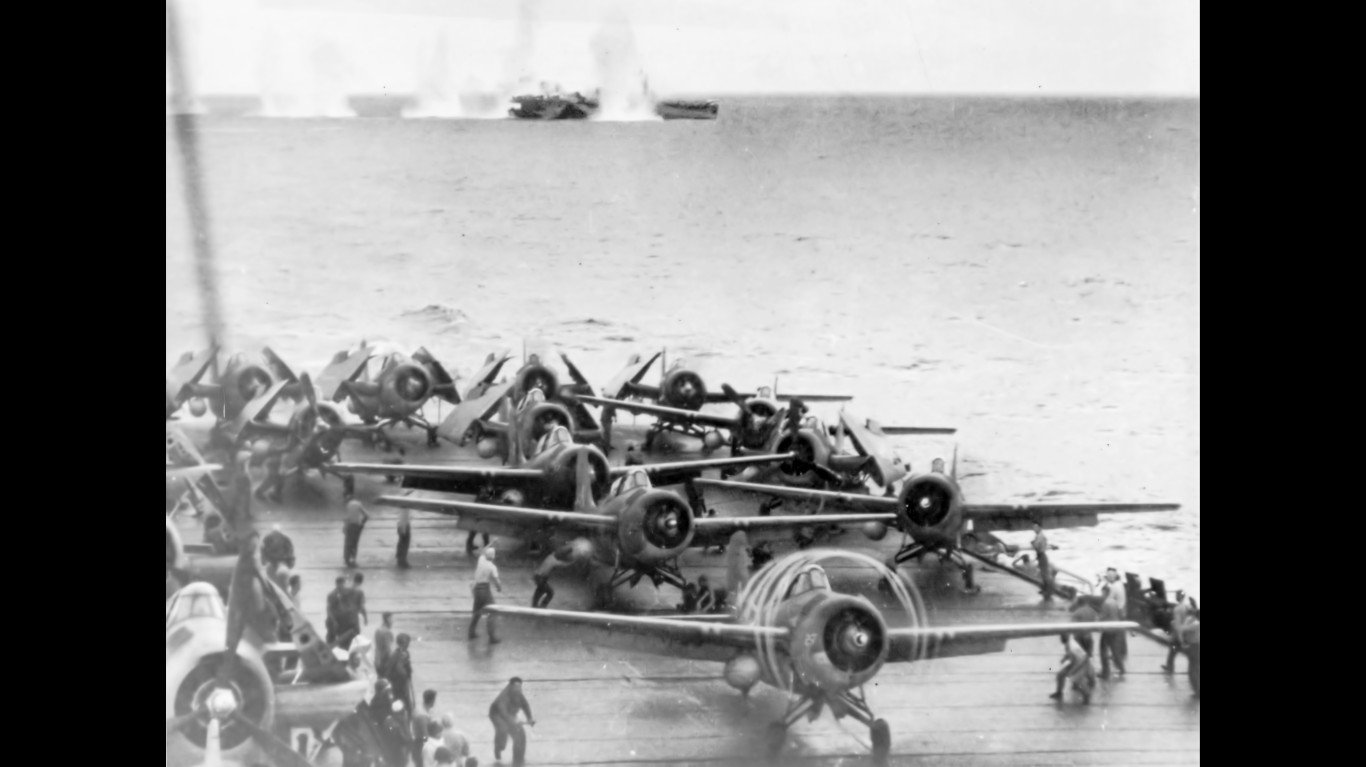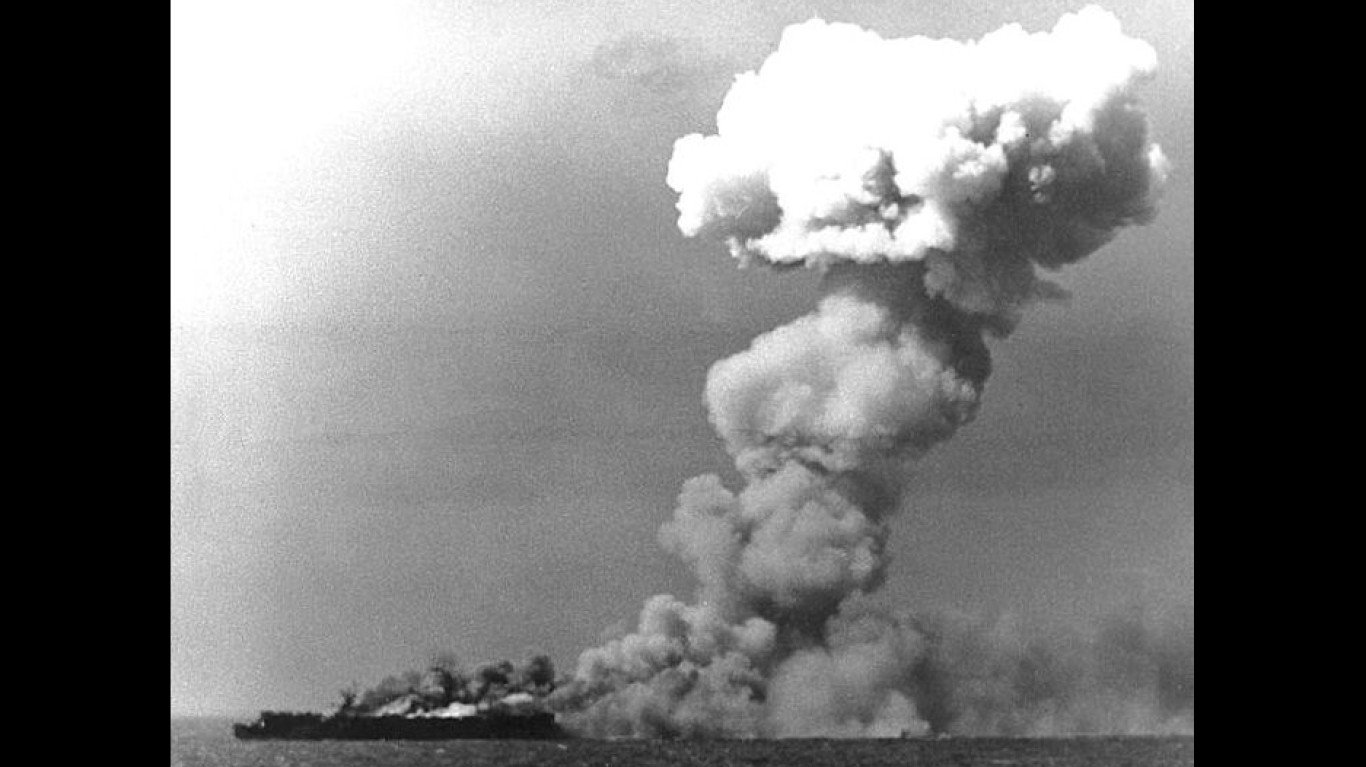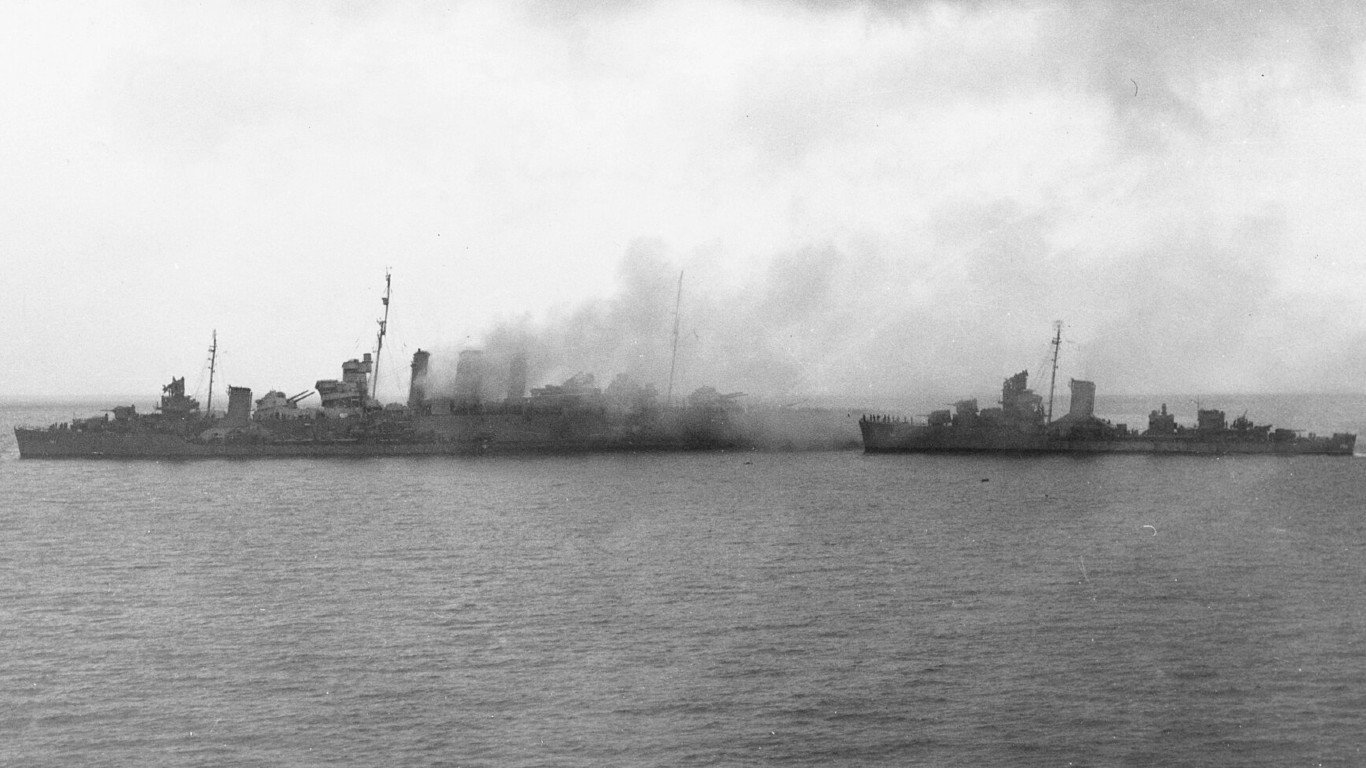

The current political climate is tense due to escalating tensions worldwide. Ongoing conflicts include those between Israel and Hamas, Russia and Ukraine, and the Houthi rebels and the United States who are fighting in the Red Sea. There is also increasing competition between China and the U.S. Many nations, including China, are strengthening their naval capabilities, while the U.S. Navy is continually modernizing its fleet to maintain readiness.
Navies have historically played significant roles in warfare and will no doubt continue to do so. World War II saw some major naval battles, marking a turning point in naval warfare with the advent of carrier-based combat. Global powers vied for dominance across oceans, using statae-of-the-art technology of the time. The United States played a prominent role in many of these battles, particularly in the Pacific Theater.
24/7 Wall St. analyzed various historical accounts of naval battles during the war to identify the largest American naval battles of WWII. Naval battles were ranked based on how many warships were involved in each battle. Supplemental information on when and where these battles took place, notable ships involved, the size and battle order of each armada, and how many ships were sunk in each battle came from various sources.
Two significant clashes in the Pacific Theater were the Battle of Midway and the Battle of Leyte Gulf. Taking place from June 4 to 7, 1942, the Battle of Midway was a critical moment in the war. With 130 warships engaged, the battle took place six months after the Pearl Harbor attack, as the United States sought to retaliate against its losses and shift the momentum of the conflict in its favor.
Japan’s Imperial Navy deployed a large carrier force, while the U.S. Navy deployed its entire fleet of heavy aircraft carriers, putting a new emphasis on air power in naval battles. Numerous supporting warships and submarines were engaged as well. During the conflict, the United States successfully surprised the Japanese fleet, sinking four heavy aircraft carriers and destroying over 300 aircraft. Although the U.S. lost one aircraft carrier and nearly 150 aircraft, this victory marked a crucial turning point in the Pacific Theater, shifting the balance of power decisively in favor of the U.S.
The Battle of Leyte Gulf took place between October 23 and 26, 1944, and is recognized as not just the largest naval battle of WWII but also in all of history. As the U.S. sought to regain control of the Phillipines with the Japanese hoping to stop their advance, this clash involving 279 warships proved critical in the war’s final stages. This battle also became infamous because the Japanese unveiled a new tactic of suicide air attacks, known as kamikaze.
Despite the devastation caused by these attacks, the United States prevailed, destroying the four remaining Japanese aircraft carriers and crippling Japan’s naval capabilities. These battles definitively shifted the balance of power in favor of the U.S., ultimately leading to Japan’s surrender.
Here are the major American naval battles of WWII:
15. Battle of Cape Esperance
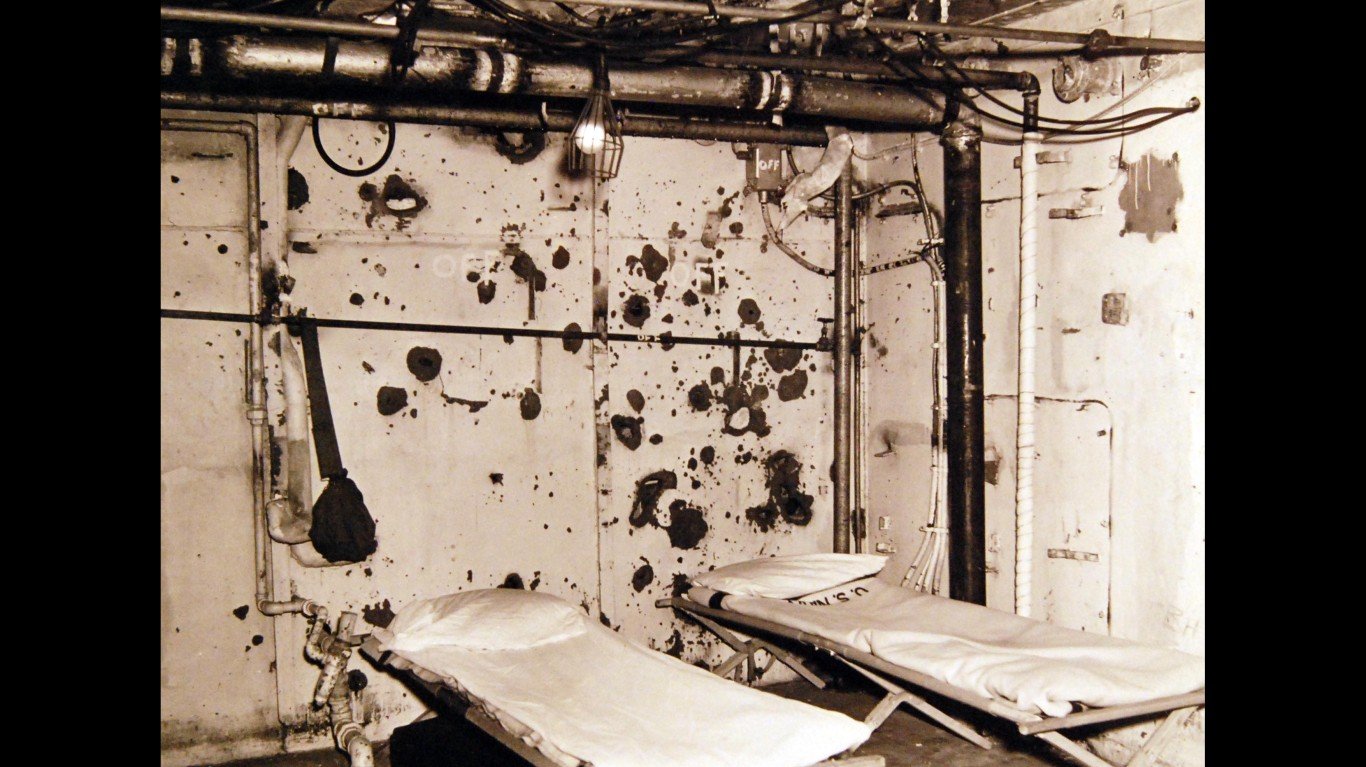
- Number of warships involved: 13
- Date: October 11, 1942
- Location: Guadalcanal, Solomon Islands
- Notable ships involved: Furutaka (sunk), Fubuki (sunk), USS Boise (damaged)
- US armada: 2 heavy cruisers, 2 light cruisers, 4 destroyers
- Japanese armada: 3 heavy cruisers, 2 destroyers
- Ships sunk: Japan: 1 heavy cruiser, 1 destroyer; US: 1 destroyer
14. Battle of Tassafaronga
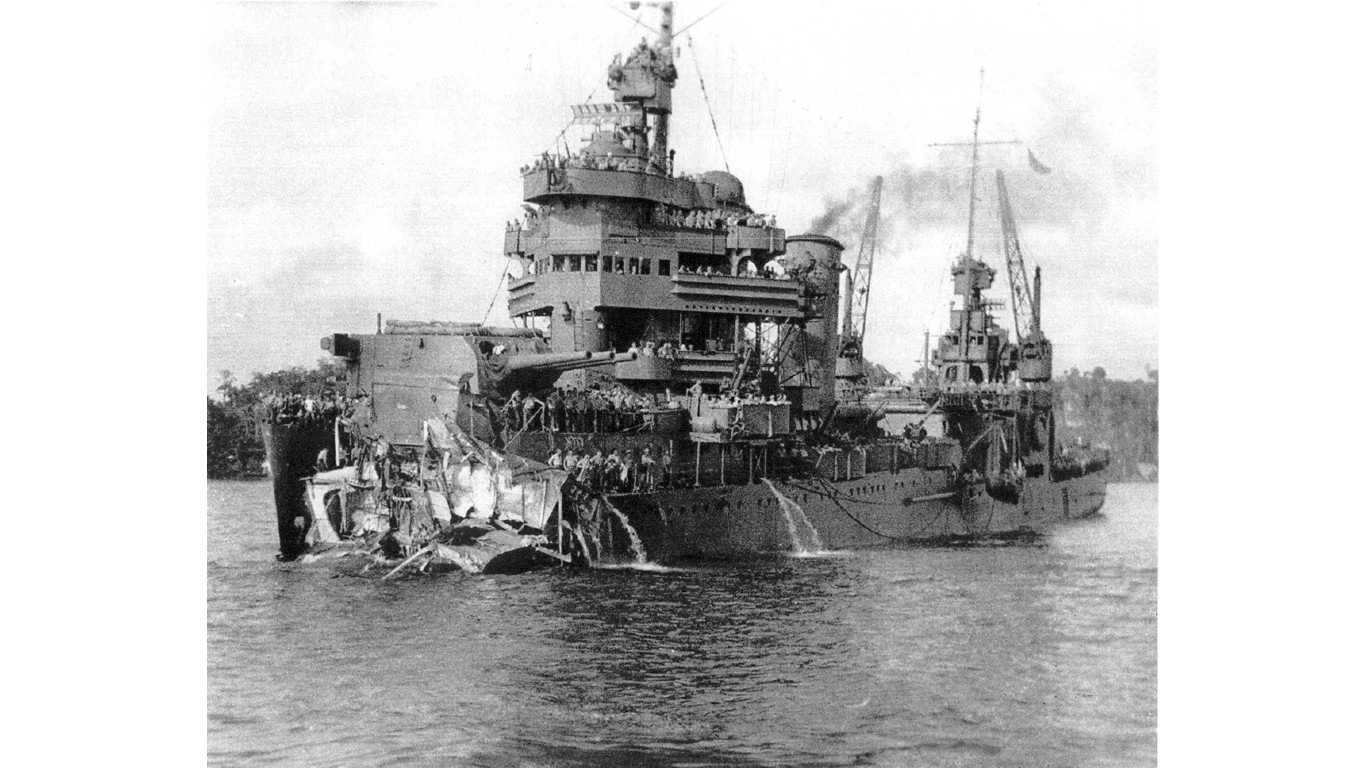
- Number of warships involved: 17
- Date: November 30, 1942
- Location: Guadalcanal, Solomon Islands
- Notable ships involved: USS Minneapolis, USS New Orleans, USS Honolulu
- US armada: 4 heavy cruisers, 1 light cruiser, 4 destroyers
- Japanese armada: 8 destroyers
- Ships sunk: Japan: 1 destroyer; US: 1 heavy cruiser
13. Battle of Empress Augusta Bay
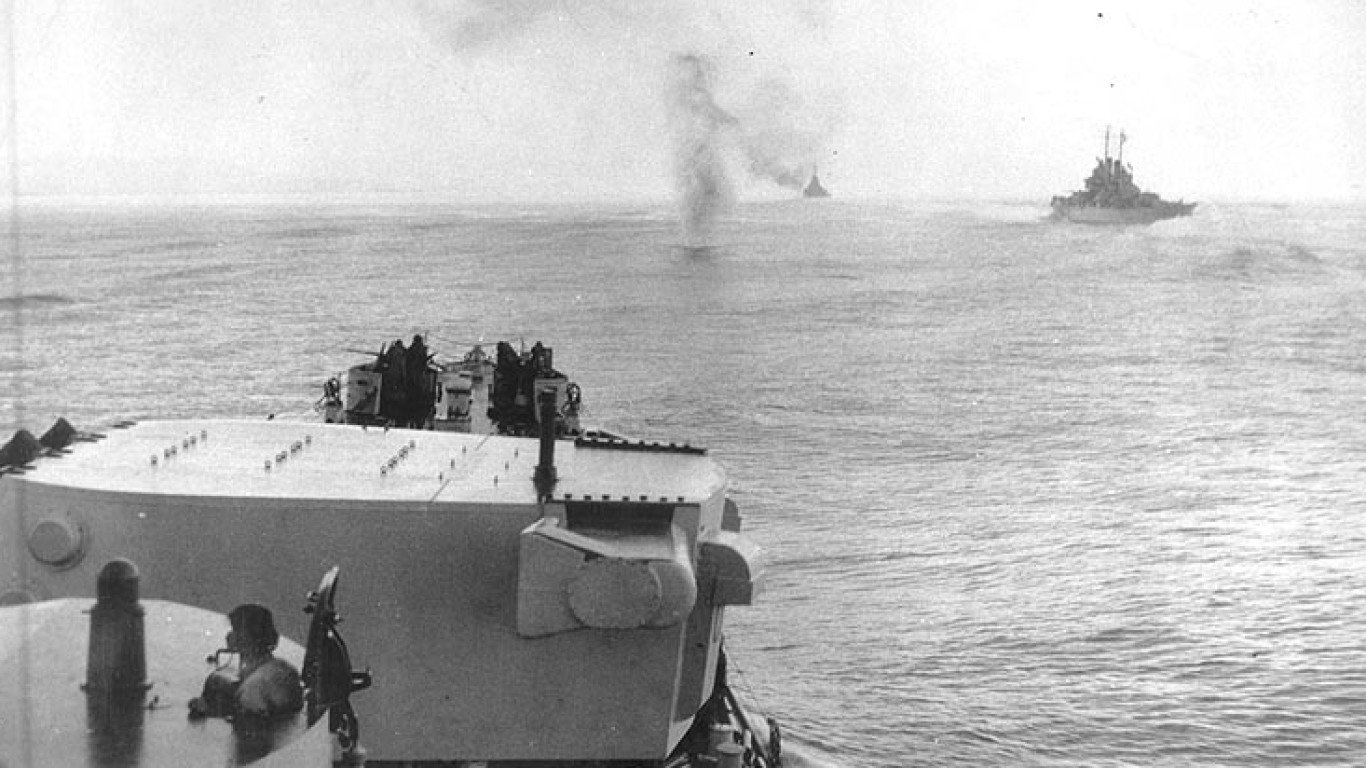
- Number of warships involved: 22
- Date: November 1-2, 1942
- Location: Bougainville, Papua New Guinea
- Notable ships involved: Sendai (sunk), Hatsukaze (sunk)
- US armada: 4 light cruisers, 8 destroyers
- Japanese armada: 4 light cruisers, 6 destroyers
- Ships sunk: Japan: 1 light cruisers, 1 destroyer
12. Battle of the Sunda Strait
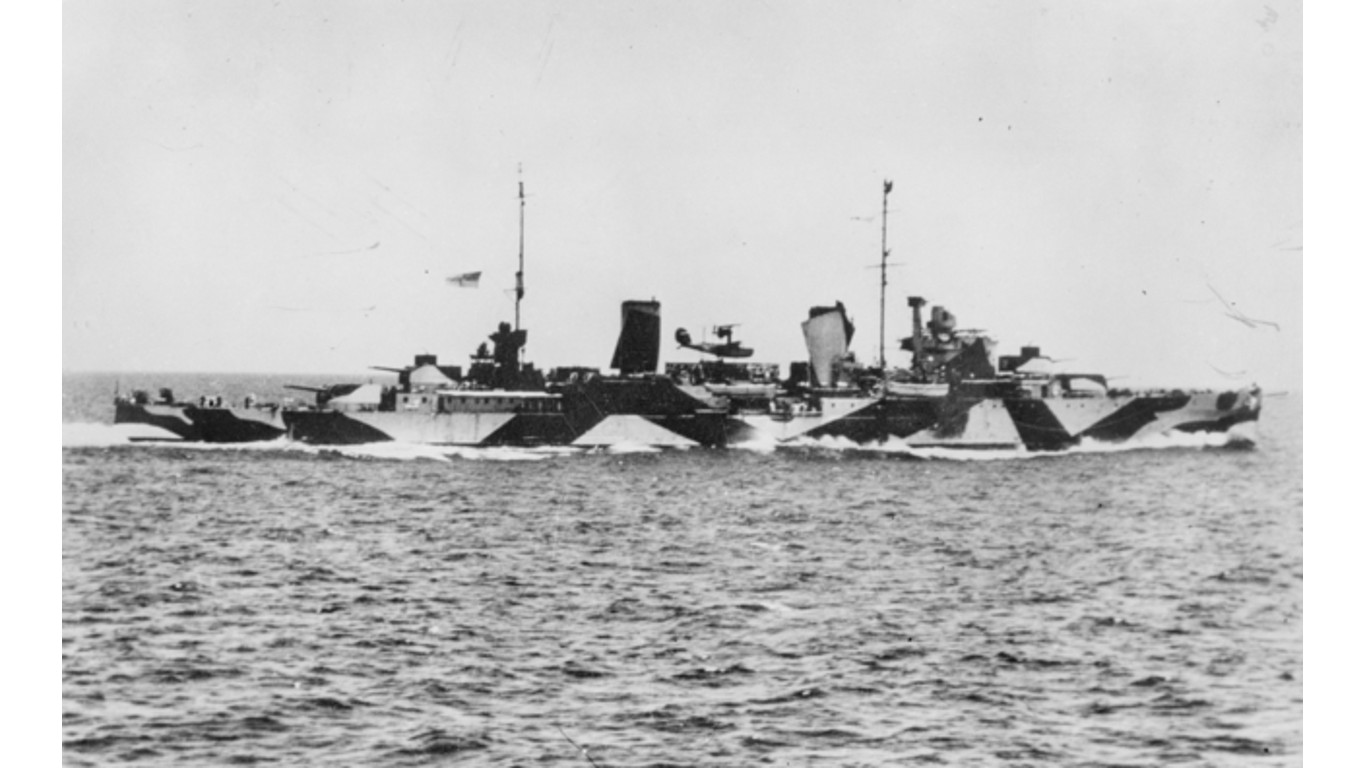
- Number of warships involved: 23
- Date: February 28, 1942
- Location: Sunda Strait, Indonesia
- Notable ships involved: USS Houston (sunk), HMAS Perth (sunk)
- Allied armada: 1 heavy cruiser, 1 light cruiser, 1 destroyer
- Japanese armada: 1 light carrier, 1 seaplane carrier, 5 cruisers, 12 destroyers, 1 minelayer
- Ships sunk: Allies: 1 heavy cruiser, 1 light cruiser, 1 destroyer; Japan: 1 minelayer, 4 troopships
11. Battle of Kolombangara
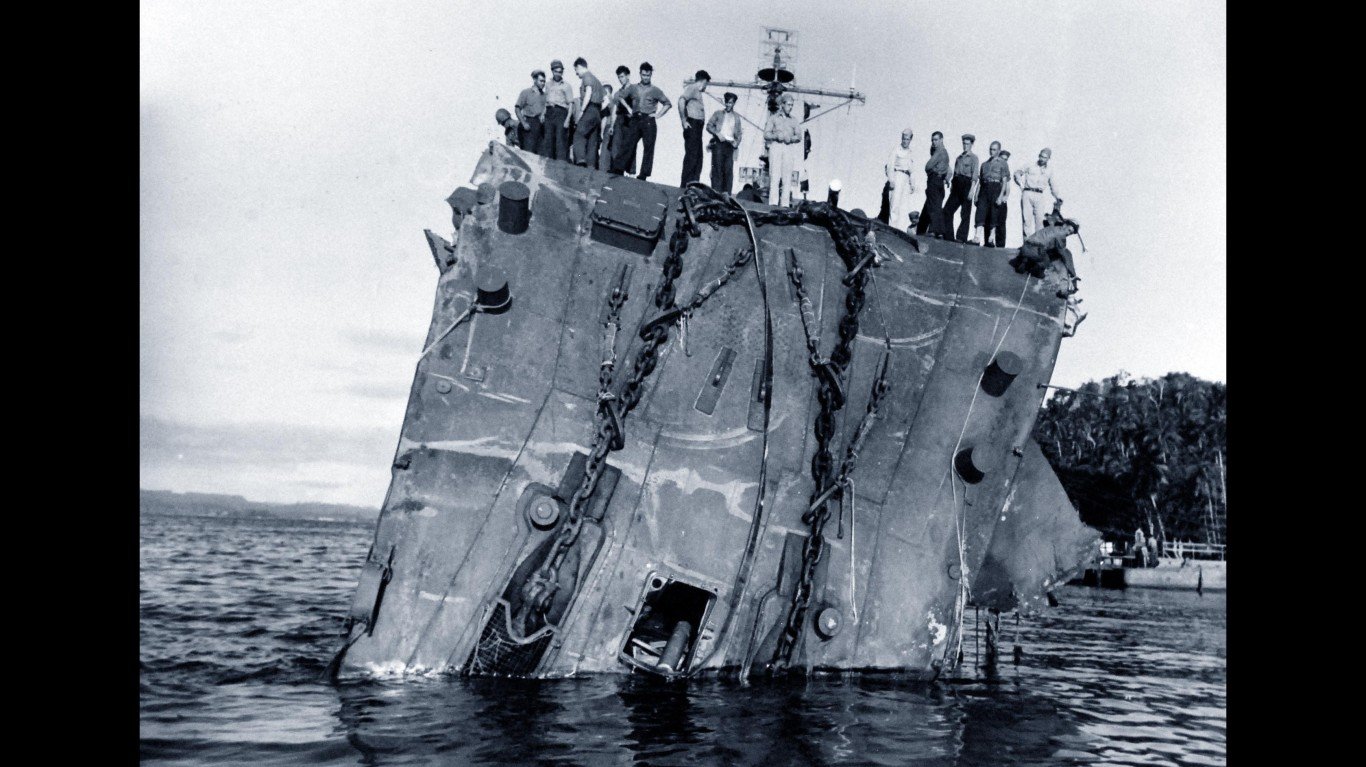
- Number of warships involved: 24
- Date: July 12-13, 1943
- Location: Kolombangara, Solomon Islands
- Notable ships involved: Jintsu (sunk), USS Honolulu (damaged), USS Saint Louis (damaged)
- US armada: 3 cruisers, 10 destroyers
- Japanese armada: 10 destroyers, 1 transport
- Ships sunk: US: 1 destroyer; Japan: 1 destroyer
10. Battle of Savo Island

- Number of warships involved: 24
- Date: August 9, 1942
- Location: Savo, Solomon Islands
- Notable ships involved: USS Quincy (sunk), USS Vincennes (sunk), USS Astoria (sunk)
- US armada: 8 cruisers, 8 destroyers
- Japanese armada: 7 cruisers, 1 destroyer
- Ships sunk: US: 3 heavy cruisers
9. Battle of the Balikpapan

- Number of warships involved: 31
- Date: January 24, 1942
- Location: Balikpapan, Borneo
- Notable ships involved: USS John D. Ford, USS Pope, USS Paul Jones
- US armada: 4 destroyers
- Japanese armada: 16 transports, 1 light cruiser, 10 destroyers
- Ships sunk: Japan: 4 transports, 1 patrol boat
8. Battle of the Java Sea
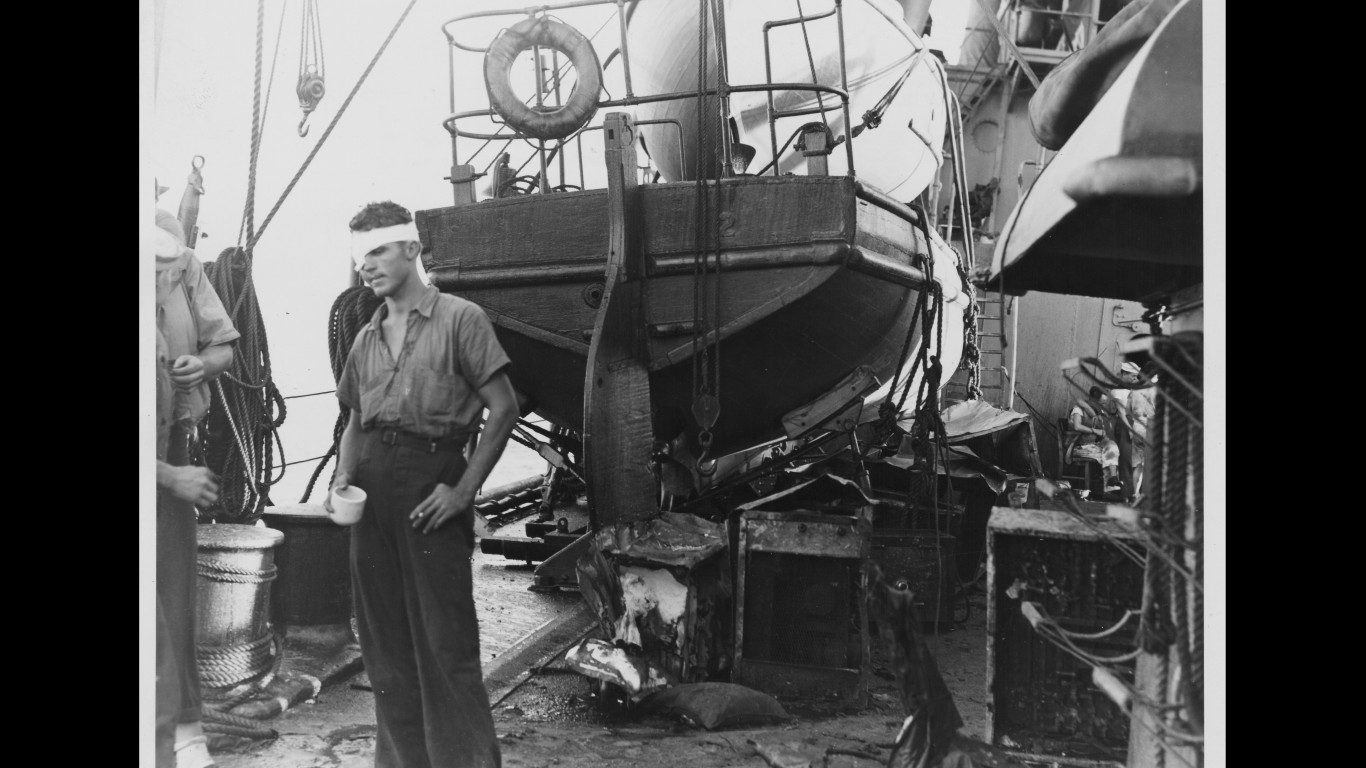
- Number of warships involved: 42
- Date: February 27, 1942
- Location: Gaspar Strait, Indonesia
- Notable ships involved: USS Houston (damaged), HMAS Perth (damaged)
- Allied armada: 2 heavy cruisers, 3 light cruisers, 9 destroyers
- Japanese armada: 2 heavy cruisers, 2 light cruisers, 14 destroyers, 10 transports
- Ships sunk: Allies: 2 cruisers, 3 destroyers
7. Battle of Santa Cruz Islands
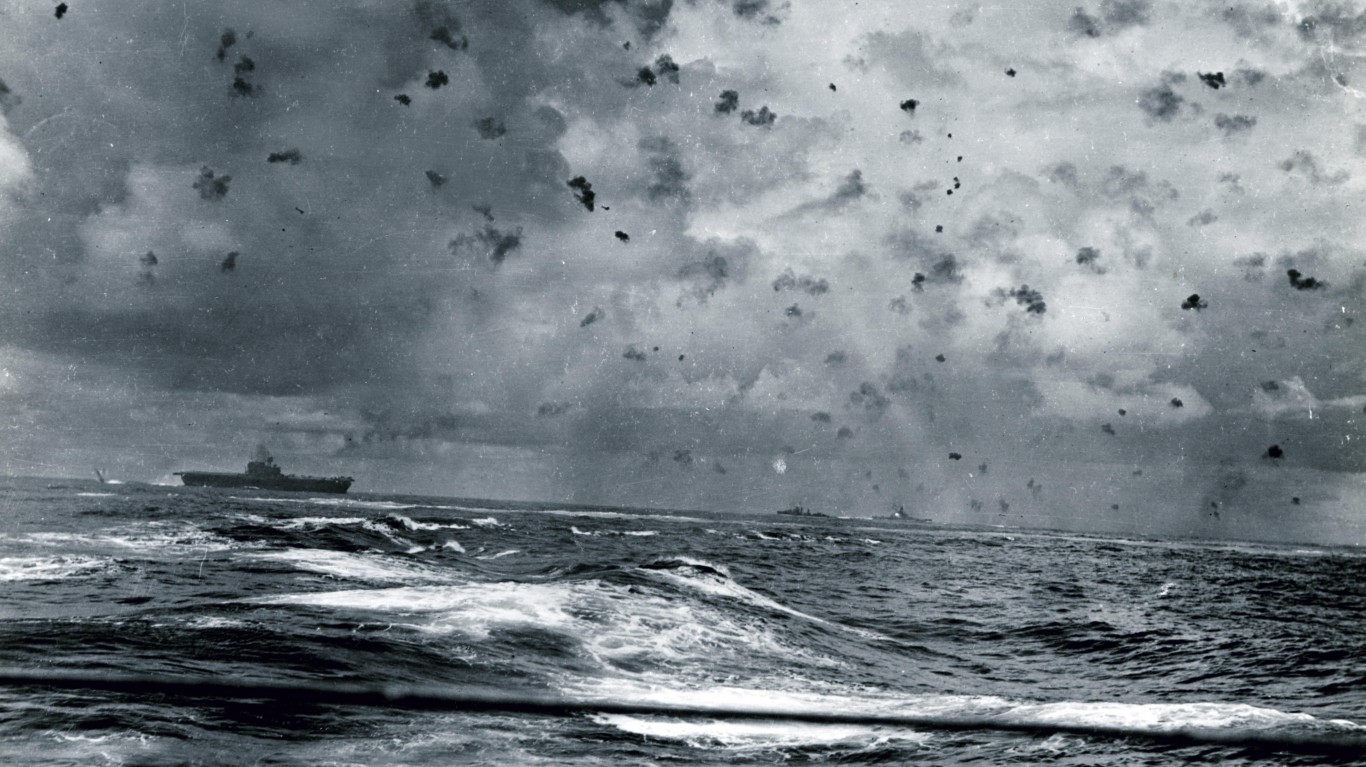
- Number of warships involved: 59
- Date: October 26, 1942
- Location: Temotu, Solomon Islands
- Notable ships involved: USS Hornet (sunk), USS Porter (sunk), USS Enterprise (damaged)
- US armada: 2 carriers, 1 battleship, 3 heavy cruisers, 3 antiaircraft light cruisers, 14 destroyers
- Japanese armada: 2 fleet carriers, 2 light carriers, 8 antiaircraft carriers, 2 light cruisers, 22 destroyers
- Ships sunk: US: 1 fleet carrier, 1 destroyer
6. Battle of the Eastern Solomons
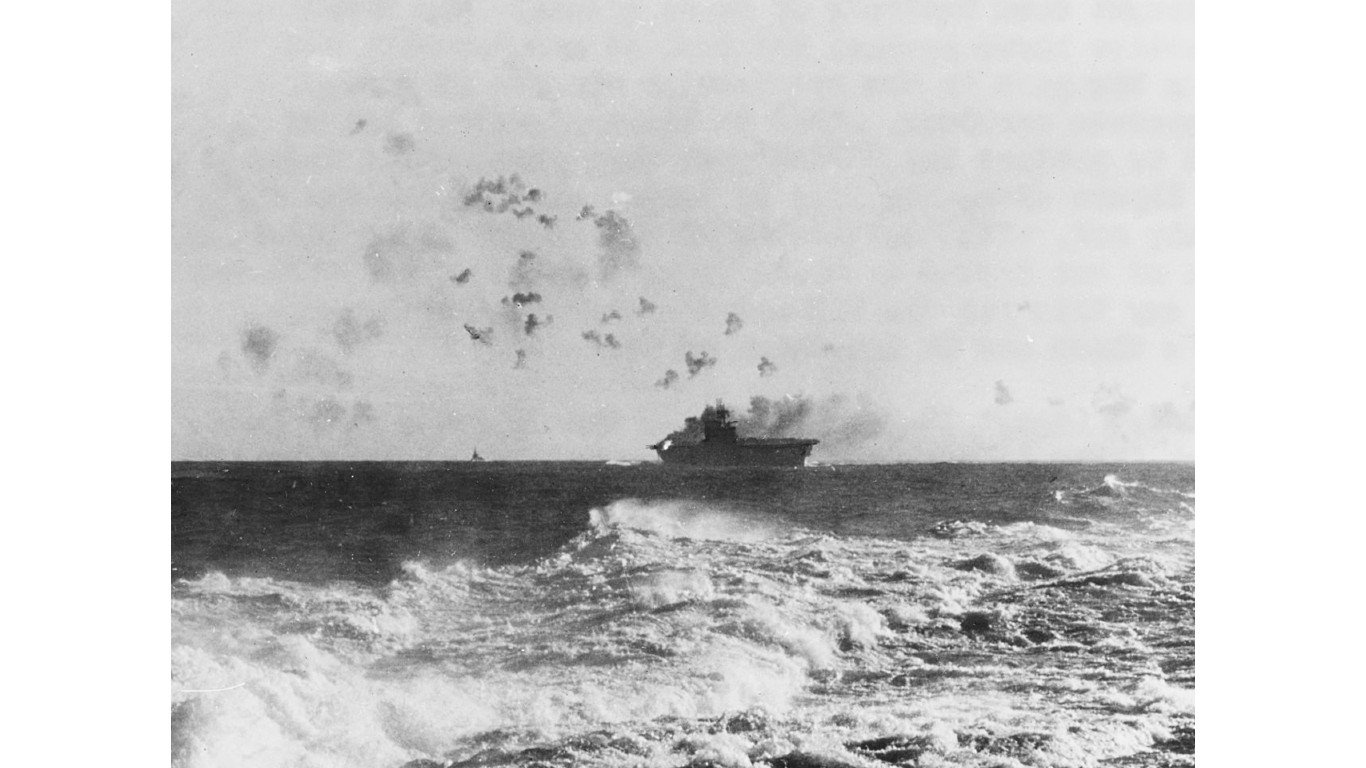
- Number of warships involved: 65
- Date: August 24, 1942
- Location: Eastern Solomon Islands
- Notable ships involved: Ryujo (sunk), USS Enterprise (damaged), Shokaku
- US armada: 2 carriers, 1 battleship, 3 heavy cruisers, 1 light cruiser, 11 destroyers
- Japanese armada: 3 carriers, 2 battleships, 17 heavy and light cruisers, 25 destroyers
- Ships sunk: Japan: 1 fleet carrier, 1 destroyer
5. Naval Battle of Guadalcanal
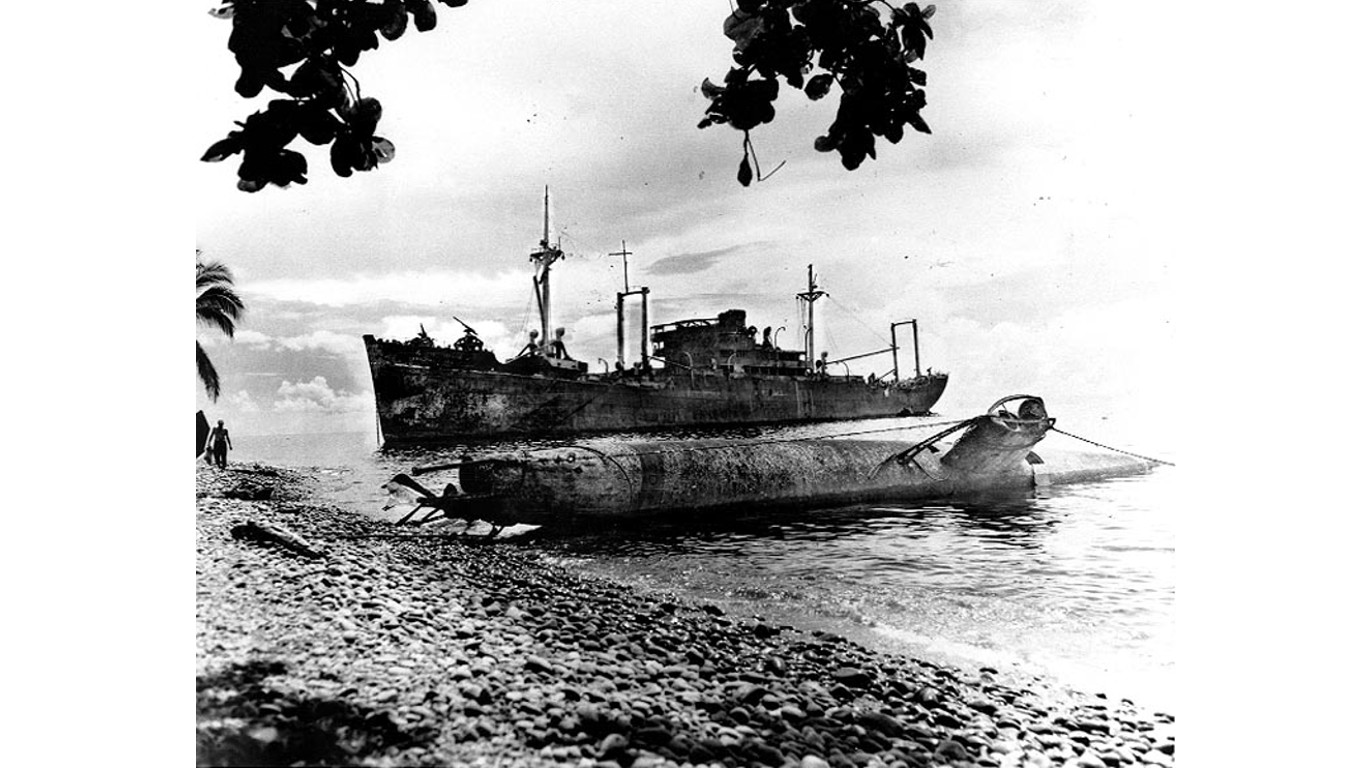
- Number of warships involved: 70
- Date: November 12-15, 1942
- Location: Guadalcanal, Solomon Islands
- Notable ships involved: Hiei (sunk), USS Atlanta (sunk), USS Juneau (sunk)
- US armada: 1 aircraft carrier, 4 heavy cruisers, 4 light cruisers, 22 destroyers, 4 transports, 3 cargo vessels
- Japanese armada: 3 battleships, 22 destroyers, 3 patrol boats, 2 light cruisers, 2 heavy cruisers
- Ships sunk: US: 2 cruisers, 7 destroyers; Japan: 2 battleships, 4 cruisers sunk, 8 destroyers sunk, 12 transports
4. Battle of the Coral Sea
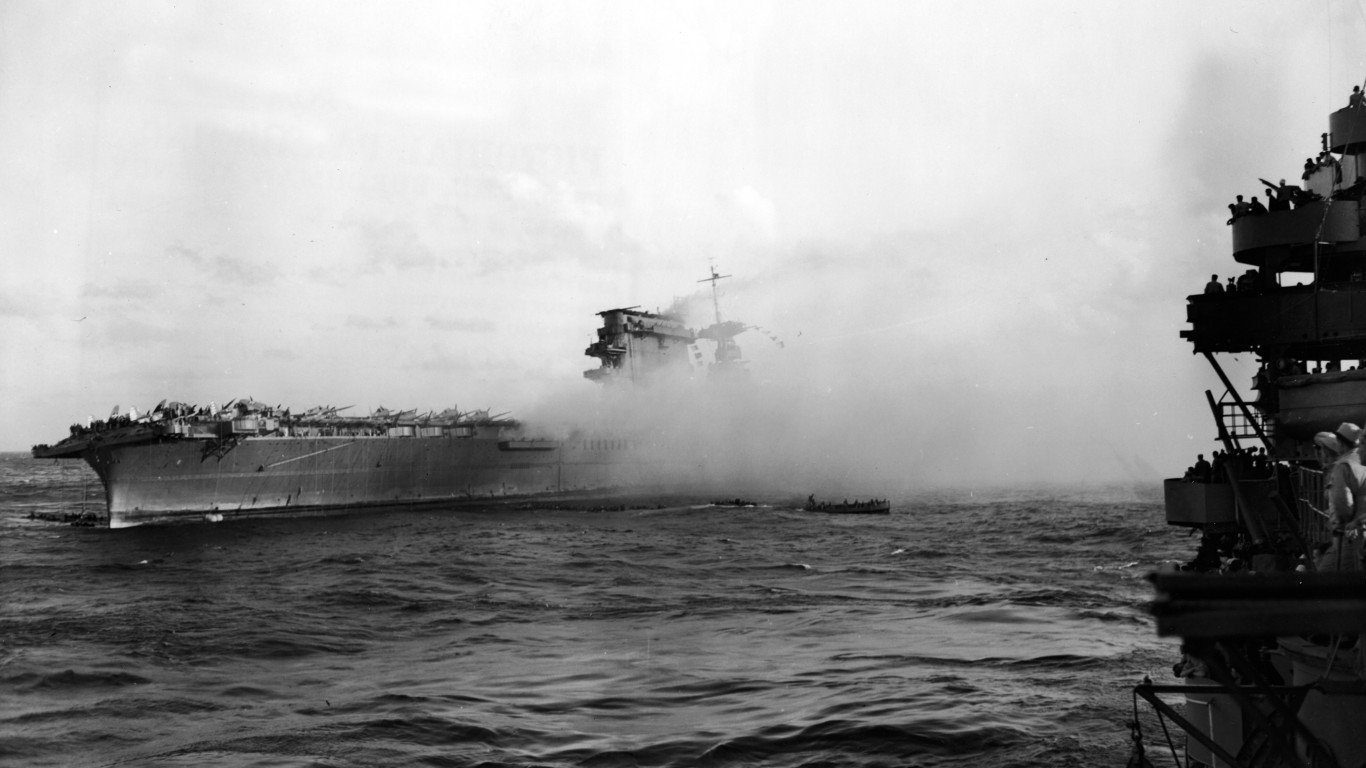
- Number of warships involved: 78
- Date: May 4-8, 1942
- Location: Australia
- Notable ships involved: USS Minneapolis, USS Yorktown, USS Lexington (sunk)
- US armada: 2 fleet carriers, 9 cruisers, 13 destroyers, 2 oilers
- Japanese armada: 2 fleet carriers, 1 light carrier, 9 cruisers, 15 destroyers, 5 minesweepers, 2 minelayers, 2 submarine chasers, 3 gunboats, 1 oil tanker, 12 transports
- Ships sunk: US: 1 carrier, 1 oiler, 1 destroyer; Japan: 1 carrier, 1 light carrier, 2 destroyers, 1 cargo ship or transport, 4 gun boats
3. Battle of Midway
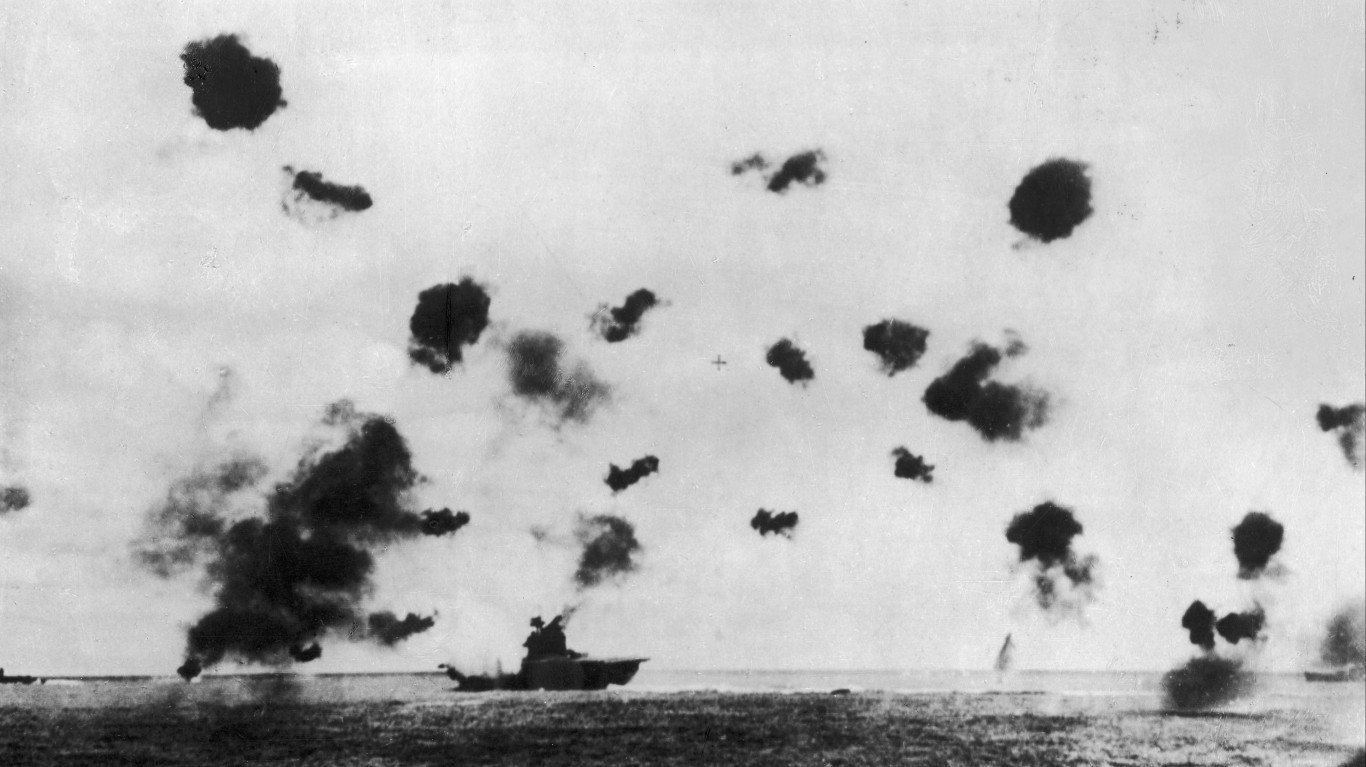
- Number of warships involved: 130
- Date: June 4-7, 1942
- Location: Midway Islands
- Notable ships involved: USS Yorktown (sunk), Akagi (sunk), Kaga (sunk), Hiryu (sunk), Soryu (sunk)
- US armada: 3 heavy aircraft carriers, 8 cruisers, 18 destroyers, 19 submarines
- Japanese armada: 4 heavy aircraft carriers, 2 light aircraft carriers, 2 seaplane carriers, 7 battleships, 15 cruisers, 42 destroyers, 10 submarines
- Ships sunk: US: 1 aircraft carrier, 1 destroyer; Japan: 4 aircraft carriers, 1 heavy cruiser
2. Battle of the Philippine Sea
- Number of warships involved: 134
- Date: June 18, 1944
- Location: Mariana Islands
- Notable ships involved: Shokaku (sunk), Taiho (sunk)
- US armada: 7 fleet carriers, 8 light carriers, 7 battleships, 79 other ships
- Japanese armada: 5 fleet carriers, 4 light carriers, 5 battleships, 19 other ships
- Ships sunk: Japan: 3 fleet carriers, 2 oilers
1. Battle of Leyte Gulf
- Number of warships involved: 279
- Date: October 23-26, 1944
- Location: Philippine Islands
- Notable ships involved: USS Princeton (sunk), USS Gambier Bay (sunk), USS St. Lo (sunk), Zuikaku (sunk), Zuiho (sunk)
- US armada: 8 fleet carriers, 8 light carriers, 18 escort carriers, 12 battleships, 24 cruisers, 141 destroyers and destroyer escorts
- Japanese armada: 1 fleet carrier, 3 light carriers, 9 battleships, 14 heavy cruisers, 6 light cruisers, 35+ destroyers
- Ships sunk: US: 1 light carrier, 2 escort carriers, 2 destroyers, 1 destroyer escort; Japan: 1 fleet carrier, 3 light carriers, 3 battleships, 10 heavy cruisers, and 11 destroyers
ALERT: Take This Retirement Quiz Now (Sponsored)
Take the quiz below to get matched with a financial advisor today.
Each advisor has been vetted by SmartAsset and is held to a fiduciary standard to act in your best interests.
Here’s how it works:
1. Answer SmartAsset advisor match quiz
2. Review your pre-screened matches at your leisure. Check out the advisors’ profiles.
3. Speak with advisors at no cost to you. Have an introductory call on the phone or introduction in person and choose whom to work with in the future
Take the retirement quiz right here.
Thank you for reading! Have some feedback for us?
Contact the 24/7 Wall St. editorial team.
